America's Oldest City
- Nate and Lori
- Mar 5, 2018
- 5 min read
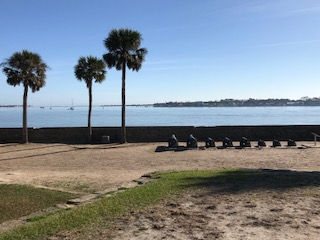
"Perhaps, after all, America never has been discovered.
I myself would say that it had merely been detected"
Oscar Wilde
State 29: Florida - February 15, 2017
Nate
Our two days in Daytona Beach with Tommy and Chrissey went far too fast, and we look forward to seeing them again in 2-3 months during our week in New York. Now, it was time to continue on our cross country journey to discover America and find a new state to call home. After departing Daytona Beach, we drove 62 miles North to the Cross Country Couples “Historic Location” for Florida; Castillio de San Marcos in St. Augustine; the oldest masonry fort in the US. The history of St. Augustine and Castillio de San Marcos spans over 450 years, so here comes a LOT of condensed history!!!
The Spanish Conquistador; Juan Ponce de Leon was the earliest known European explorer to set foot on the land we now know as America. On April 2, 1513, Ponce de Leon’s ship made landfall, and he named the region La Florida; land of flowers. Just to set the record straight, the story that Ponce de Leon set sail in search of the fountain of youth is a very gripping story, but unfortunately it is just that; a story. In years that followed, many unsuccessful attempts were made to establish a permanent Spanish Colony in Florida. In 1565, Spanish Conquistador Pedro Menéndez de Avilés founded St. Augustine, which would become the oldest continuously occupied European settlement in the Continental US.
English land claims to the North and French land claims to the West, made Florida a very tumultuous region. In 1672, Spain built Fort Castillio de San Marcos to protect St. Augustine from hostile foreign forces, and construction was completed in 1695. The fort’s defenses were tested in 1702, an again in 1740, when the English twice attacked St. Augustine, but both attacks would fail to take the city. In 1763, The British eventually gained control of the fort peacefully as a provision of a treaty with Spain, and in 1783 control of the fort was returned back to Spain also via a treaty. During the early 19th century America was rapidly expanding resulting in border disputes between Spanish Florida and the US. In 1819, such disputes were resolved when Spain signed a treaty ceding Florida to the US.
In 1862, Florida succeeded from the US shortly after the outbreak of the Civil War. The Union Army abandoned the fort, but left one soldier behind to serve as caretaker. Soon thereafter, the Confederates demanded the forts surrender from the sole Union soldier remaining inside. However, the Union soldier refused to do so until he was given a written receipt from the Confederacy, and after the receipt was provided, the Confederacy took the fort without a shot being fired. In 1862, Union troops reclaimed St. Augustine and the fort also without a shot being fired after the mayor surrendered the city to save it from being burned to ground. After the Civil War, the fort was used as a military prison during the wars with the Native Americans. In 1924, Castillio de San Marcos was declared a National Historical Monument, and in 1933, became part of the National Park Service.
Just to recap; St. Augustine served as the capitol of Spanish Florida, British Florida, Spanish Florida once again, and then capitol of the US Florida territory until 1824 when the capitol was moved from St Augustine to Tallahassee. Castillio de San Marcos has peacefully changed hands 6 times by 4 different governments, but had never been taken by force! That my friends is over 450 years of history in under a page! I am quite proud of myself!
Today, St. Augustine is home to 13,679 residents, and tens of thousands visit the historic city to connect with the roots of our nation. The Cross Country Couple was thrilled to finally be among them! After presenting our National Park Pass for free admission, we crossed a very cool medieval looking drawbridge, before entering the fort. The fort features a self-guided tour, and after watching a brief movie, we were off to begin our exploration of the fort which predates the founding of our country by over 100 years! Please see the pictures below.
It is hard to describe the sensation of walking around in the same fort, through the same doorways, and standing in the very same rooms as others have for over 450 years! I would like to take a moment to highlight a few points of interest. The walls of the fort were constructed of a peculiar material I had never heard of before called coquina. Generally speaking, coquina is a porous sedimentary rock composed of sea shell fragments. Initially, I figured the reason coquina was used to build the fort was because the rock was native to the area. However, my assumption would prove to be very wrong. The coquina rock used in the fort's construction was actually quarried from 70 miles away! The reason coquina was used to build the fort is because the porous stone absorbs the shock of cannon fire. Upon impact, cannonballs would sink into the coquina instead of shattering the stone! Those Spanish were so very smart! Please see the pictures below. I zoomed in for you so you can see the seashells in the stone.
Another fascinating feature of the fort was the graffiti carved into the walls. Typically desecrating a national historic landmark is distasteful and even criminal. However, the graffiti on the walls of the Castillo de San Marcos were etched into the coquina long ago by the people and nations who once inhabited the fort. I saw images of British ships, insignia's of Civil War regimens, and petroglyphs by Native Americans prisoners. What a personal and powerful way of reaching out across the centuries, and it gives new meaning to the saying “if these walls could talk”. However, the most shocking of all graffiti I saw scratched into the walls of the oldest fort in the oldest city in America read, “Jane Loves Dave 2016”. Some people are just assholes! Please see pictures below.
Please see the pictures below of our visit to Castillo de San Marcos in St. Augustine.
Visiting St. Augustine has long been on my bucket list, and completes my trifecta of visiting the 3 oldest surviving settlements in the US. We had previously visited Jamestown the oldest English Settlement in the US, which you can read about by clicking here. We also previously visited Chaco Culture the oldest surviving Native American settlement in US, which you can read about by clicking here. My visit to St. Augustine was one of the most haunting and powerful experiences of my cross country journey.
After departing St. Augustine, we drove 52 miles Northwest to a Walmart in Jacksonville where we spent our last night in the Sunshine State!



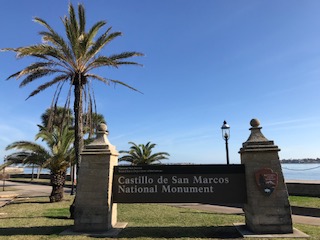

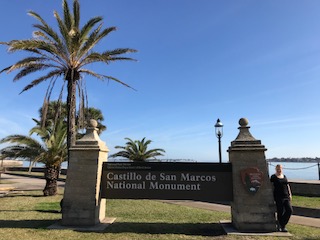





















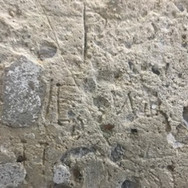





































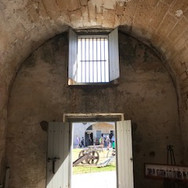

















































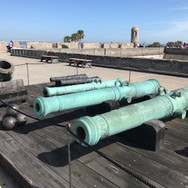

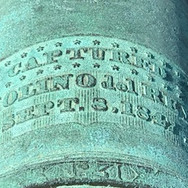



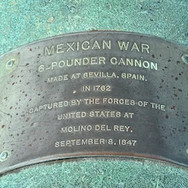
Comments